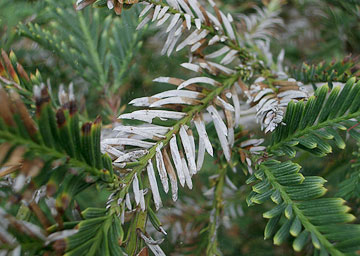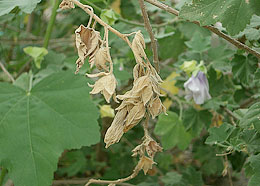- Home
- Learn about salinity
- Get to know your site
- Design a landscape
- Solve a problem
- Other information
Salinity Management Guide

Describing for diagnosis
Diagnosing problems involving plants is often quite difficult. The symptoms of injury — damaged, yellowed, partially dead, or entirely dead leaves, stunted growth, and more — can result from many different causes. Salinity is only one of those.
Diagnosing problems that involve soil is also difficult. If you see a problem such as a barren patch of ground, you won't know right away whether the cause is salinity. It could be the result of poor drainage, or a high water table, or incompatible fill materials, or one of a host of other issues.
The key to successful diagnosis, both for plant-related problems and for soil-related ones, is to devise and then follow a logical strategy. Such a strategy often is stepwise and tailored to the situation at hand. Yet, certain general steps often need to be included. For a plant-related problem, consider these:
- Identify the plant or plants for which the problem exists.
- Examine each plant and its local environment.
- Define the problem. Keep an open mind at this point and avoid formulating any premature conclusions regarding the cause.
- Look for patterns in the spatial distribution of symptoms.
- Find out about past and present management practices.
- Synthesize the available information and formulate a tentative diagnosis.
- Test the tentative diagnosis by further examining the plant, collecting more detailed information, consulting experts, or submitting samples of plant tissue, irrigation water, or soil to a commercial laboratory for analysis.

For more information about the various steps above, consult Abiotic Disorders of Landscape Plants: A Diagnostic Guide, by Costello, Perry, Matheny, Henry, and Geisel (2003), or Arboriculture: Integrated Management of Landscape Trees, Shrubs, and Vines, 4th Edition, by Harris, Clark, and Matheny (2004). Full bibliographic information for these books is available on the last page of this module.
Use the table of plant symptoms or the table of soil symptoms to help you decide where in this module to go next. The diagnostic methods outlined in the tables are described in detail in the pages that follow.
| « Previous page | Next page » |